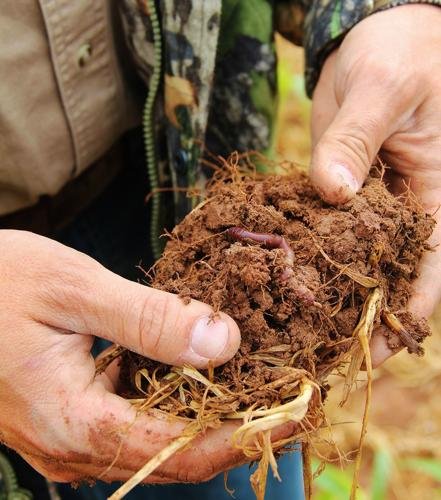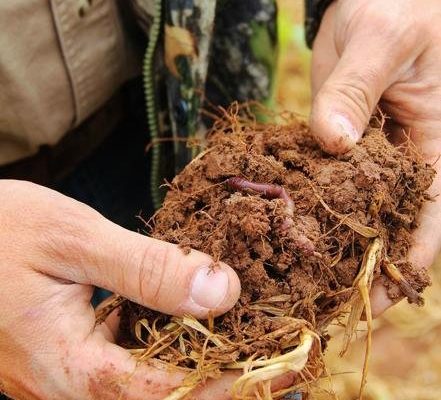
So, how do you know if your earthworm population is healthy? It’s not as hard as you might think! Let’s dig into some solid signs of vibrant earthworm communities in your soil. You’ll find that understanding these indicators can help you ensure your garden remains lush and productive. From soil texture to moisture levels, these little fellows impact more than just the underground ecosystem; they influence everything that grows above it too.
Why Earthworms Matter for Soil Health
Earthworms are like the gardeners of the soil world—they aerate it, improve its structure, and help decompose organic matter. When they tunnel through the earth, they not only create channels for air and water to travel but also mix nutrients into the soil. This action breaks down organic materials, making them available for plants.
Without earthworms, soil can become compacted, making it hard for roots to grow. Picture trying to push a pencil through a brick wall; that’s what it’s like for plants without the softening effects of these creatures. Plus, they play a critical role in enhancing soil biodiversity. Healthy, worm-rich soil means healthier plants, which leads to a more productive garden or farm.
Signs of Healthy Earthworm Populations
So, how can you spot a thriving earthworm population? Here are some key signs to look out for:
- Dark, Rich Soil: Healthy earthworm activity usually results in dark, loamy soil, rich in nutrients. If your soil looks like coffee grounds, that’s a good sign!
- Earthworm Castings: These are nature’s fertilizer. If you notice dark, crumbly pellets in your garden, that’s likely earthworm poop, and it’s packed with nutrients.
- Soil Texture: Healthy soil should be crumbly rather than hard and compacted. If you can easily break it apart, you might have a healthy wriggler community.
These signs are like a dashboard that tells you your soil is alive and well. If you can spot these indicators, you’re likely nurturing a healthy ecosystem below the surface.
Soil Moisture Levels
Earthworms thrive in moist environments. They need a certain level of moisture to survive and go about their daily activities. If you notice that your soil retains moisture well, that’s a fantastic indicator.
Generally, earthworms make their homes in damp, dark places, so if you’re frequently seeing them after a rain, rejoice! This means your soil isn’t just hospitable; it’s actively supporting life. On the flip side, if your soil dries out too quickly and you aren’t spotting many earthworms, it might be time to tweak your watering habits.
Remember, earthworms also help with moisture retention. Their tunnels allow water to seep deep into the ground, reducing runoff and promoting healthy roots.
Diversity of Earthworm Species
Another important factor is the variety of earthworm species in your soil. Just like a thriving garden benefits from a mix of plants, your soil benefits from different types of earthworms.
For instance, **nightcrawlers** are great for aerating soil, while **red wigglers** thrive in compost. If you notice a mix of these types, it’s a sign your soil is healthy. The more diverse your earthworm population, the better they can work together to break down organic matter, improve soil structure, and enhance nutrient availability.
Sometimes, you might find earthworm species that are not native to your region. While they can still benefit soil, it’s generally best if your local species dominate.
Activity Levels: The Movement is Key
You might be wondering how to gauge the activity levels of earthworms. One clear sign is their surface activity after rain. If you see them on the ground, they’re likely in search of food or moisture. High activity levels indicate a healthy population.
If you’re digging around in your garden and you encounter plenty of worms, that’s another great sign! A few earthworms here and there is acceptable, but an abundance shows your soil is rich in organic material, and it’s a thriving ecosystem. Take a moment to appreciate each one you uncover. They’re working hard for you!
Compaction and Soil Structure
A vital factor in measuring earthworm health is how compacted your soil feels. Healthy soil should be loose and crumbly, allowing for air and water to infiltrate easily. If you have to work really hard to push a shovel into the soil, it’s likely too compacted.
Good soil structure is often a direct result of earthworm activity. Their tunnels create pathways for air and water, making the overall soil environment much friendlier for plant roots. If your soil is crumbly and easy to work with, it’s a strong indicator of a thriving earthworm community beneath the surface.
Earthworms also help create aggregates, which are clumps of soil particles bound together. These aggregates improve water retention and nutrient cycling, making your garden even healthier.
Encouraging Healthy Earthworm Populations
If you’re looking to boost earthworm populations in your garden, here are some tips:
- Composting: Adding compost to your soil provides food for worms and enhances soil structure.
- Avoid Chemicals: Pesticides and synthetic fertilizers can harm earthworms. Opt for organic methods instead.
- Mulching: A layer of organic mulch can keep moisture levels steady and provide worms with food.
By focusing on these practices, you can promote a flourishing population of earthworms, which will benefit your garden immensely.
In conclusion, keeping an eye on the signs of healthy earthworm populations in your soil can give you great insights into your garden’s overall health. From dark, rich soil and visible castings to the right moisture levels and diverse species, each indicator tells a part of the story.
By nurturing a healthy earthworm community, you’re not just helping the worms; you’re fostering a vibrant ecosystem that supports all your plants. So next time you’re out in the garden, take a moment to dig deeper—both literally and figuratively—and appreciate the essential work that earthworms do!

